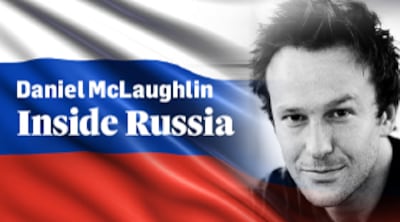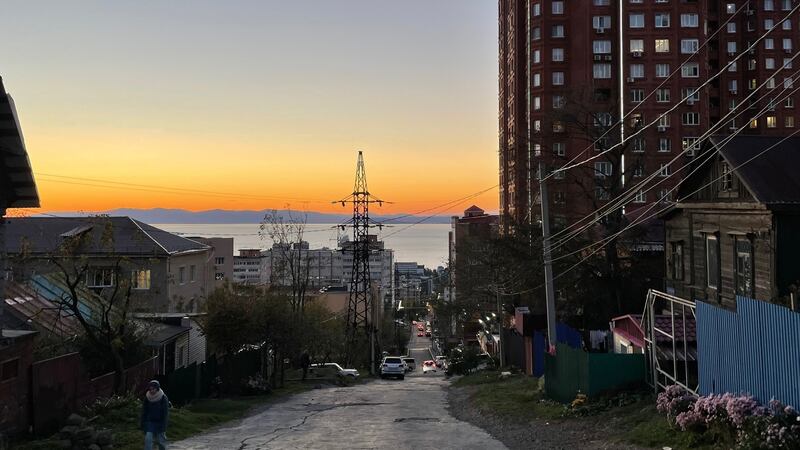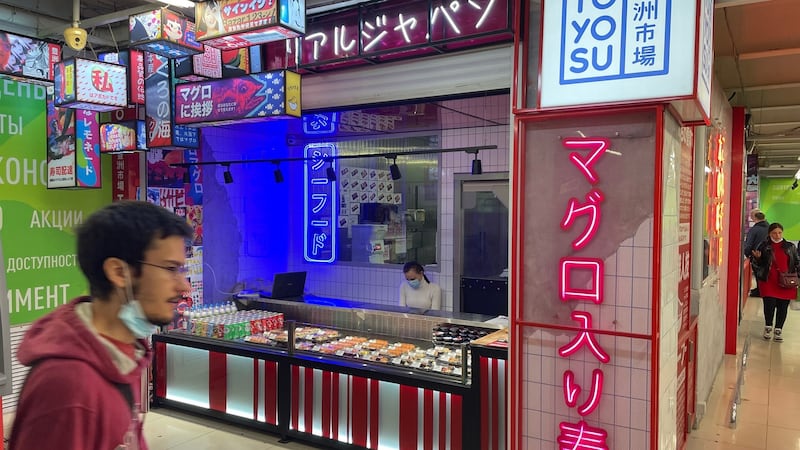Shortly after Nikita Khrushchev visited the United States in 1959, the first leader of the USSR to do so, he travelled to his own country’s Pacific coast and declared that Vladivostok would become the “Soviet San Francisco”.
But while the California original went from Haight-Ashbury and the Summer of Love to developing home computers and the internet, Vladivostok remained a military-dominated port off-limits to foreigners and even most Soviets.

As it was put by local blogger “Primorsk Traveller”, who takes his name from the region around Vladivostok: “After [Khrushchev’s pledge] a funicular was built in Vladivostok. That’s where the city’s transformation into San Francisco ended.”
Some tiny city cars look particularly toy-like with a burly Russian at the wheel
Around the Amur Bay and the crescent-shaped Golden Horn that curves deep into the city, the Soviets also built ranks of tower blocks, linked by broad avenues and straggly side-streets, that sprawl across the steep hills overlooking the water.

When communism’s collapse reopened Vladivostok to the world in the 1990s, “gangster capitalism” roared in and subjected the city to years of chaotic construction, unchecked by urban planning, which piled a jumble of graft-ridden and shoddy projects onto already ailing Soviet infrastructure.
Yet despite all the neglect and mistreatment, this city of 600,000 people can still be stunning, especially to travellers stepping off an 8½-hour flight from European Russia.
After pancake-flat Saint Petersburg and Moscow's only marginally less monotonous terrain, Vladivostok's plunge towards the Sea of Japan is thrilling, and its island-studded bay shimmers under skies that seem more luminous than those further west.
Right-hand drive
The traffic scaling the hills among these vistas is also different, because most vehicles here are right-hand drive, imported directly from Japan, and include models that were never sold in Europe, some of them tiny city cars that look particularly toy-like with a burly Russian at the wheel.
Job offers taped to lampposts here seek locals willing to help importers register cars from Japan, and adverts promise Japanese – not European – quality to prospective shoppers.
While car traders and smugglers quickly forged international links after the Soviet Union's demise, officials were slow to develop connections between Vladivostok and its rapidly rising neighbours – Japan, South Korea and China.
That was supposed to change in 2012, when Vladivostok hosted the Asia-Pacific Economic Co-operation (APEC) summit and welcomed the region’s leaders to a city where billions of euro had been spent on a major modernisation programme.
Headline projects included a new airport and highway, a university campus and two spectacular bridges in the city, including the longest cable-stayed span in the world, with pylons that are almost as tall as the Eiffel Tower.

Locals hailed the investment and hoped it marked a move from decades of talk about developing Russia’s “window on the east” to a policy of consistent action.
A decade on, however, people are still leaving Vladivostok and Russia’s Far Eastern federal district – an area more than twice the size of India, yet home to just 6 million people, which has lost a quarter of its population since 1990.
They complain about low wages, high prices for everything from apartments to groceries, and basic infrastructure and public services that are still crumbling in the shadow of those glittering new bridges.
Corruption remains a constant, and a string of Vladivostok mayors have faced graft allegations: former city chief Igor Pushkaryov was jailed for 15 years in 2019 over building deals with firms run by his relatives, and another ex-mayor, Oleg Gumenyuk, is now in custody on suspicion of taking bribes from a funeral home.
Pacific fleet
The Pacific fleet of the Russian navy continues to flourish, however, amid growing co-operation with China and tension with Japan and the United States.
Russia and China have just completed three days of joint manoeuvres in the Sea of Japan, which began on Friday with Moscow’s military saying it prevented a US destroyer from entering Russian territorial waters – a claim the Pentagon denied.
Moscow and Tokyo maintain cordial ties, but are still to sign a formal peace treaty after the second World War due to a dispute over a Kremlin-controlled archipelago that Russia calls the Kuril Islands, and Japan the Northern Territories.
The impasse prevents the Pacific neighbours forging closer relations, and stops Japan investing more in Vladivostok – a city whose name means “ruler of the east”, and whose strategic value, if not the needs of its people, has always been apparent to distant Moscow.
“Vladivostok is far away,” Vladimir Lenin said nearly a century ago, “but this city is ours.”



















